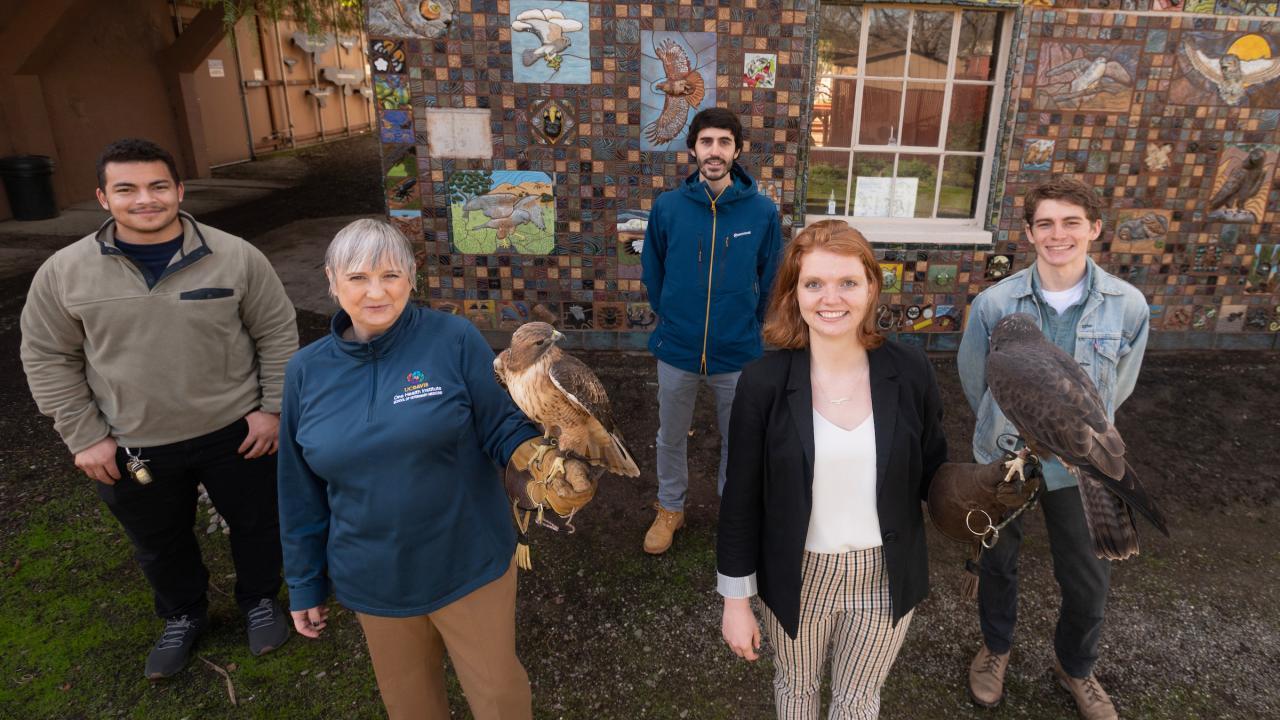
UC Davis Establishes Bird Flight Research Center
Unique Facility Will Image Birds of Prey in Flight to Model Uncrewed Aerial Systems
Researching how bird flight can inform aircraft design is the goal of a new center to be established at the University of California, Davis.
Christina Harvey, an assistant professor of mechanical and aerospace engineering at UC Davis, and Michelle Hawkins, a professor in the School of Veterinary Medicine and director of the California Raptor Center, are launching the bird flight research center with a nearly $3 million grant from the Department of Defense. The new center will utilize motion capture and photogrammetry — which uses photography to determine the distance between objects — technologies to image birds in flight and create 3D models of the wing shapes to inform the design and capabilities of the next generation of uncrewed aerial systems, or UAS. The center will be the first of its kind in the country.
Harvey and Hawkins anticipate that by gleaning information about how different types of birds maneuver around complex environments, they can inform the development of next-generation drones and other uncrewed aerial systems to deliver packages, detect and fight wildfires, and more.
“Michelle Hawkins and the California Raptor Center were a big reason I came to UC Davis,” said Harvey, who is trained in both zoology and engineering and joined the Department of Mechanical and Aerospace Engineering in 2022. “I can be running wind tunnel experiments [on the UC Davis campus], and then in 15 minutes, go and work with the birds directly at the CRC.”
The facility is currently in the planning stages, with the goal to break ground at the raptor center this fall. It will comprise a covered, prefabricated barn that will serve as an indoor hall in which the birds can fly and maneuver. Infrared and high-speed, high-resolution cameras will be installed along the hall, which will also house holding cages, called mews, to acclimate the birds to the flight area.
